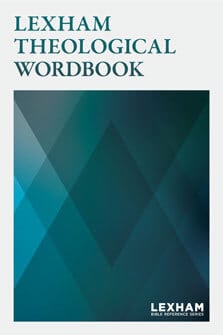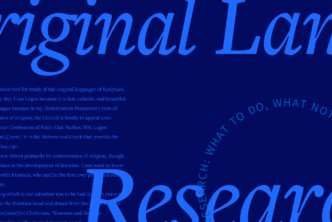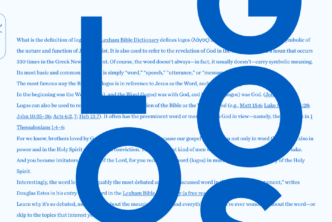Language is a funny thing. A single word can have many meanings, and many words can describe a single concept. In our native tongue, we usually have a pretty good grasp on which words we can use to express certain thoughts and ideas. But when we encounter languages that we haven’t spent a lifetime speaking and reading, our grasp on these words can slip.
In biblical studies, interacting with Hebrew and Greek is a necessity to understand the original context of the text. For students of these biblical languages or anyone without formal training, the original biblical languages can seem like barriers preventing them from fully understanding the Bible. Resources like the Hebrew–Aramaic Lexicon of the Old Testament (HALOT) and the Greek English Lexicon of the New Testament and Early Christian Literature (BDAG) are geared toward intense academic work, which can make them less accessible to students and virtually inaccessible to anyone without formal training.
The Lexham Theological Wordbook makes this lexical information accessible for a broader audience. This resource is designed to make the original biblical languages accessible to people from all interest levels. Plus, it’s designed to work seamlessly with your Logos Bible Software library.
A simple change makes all the difference

Unlike most other wordbooks, the Lexham Theological Wordbook organizes entries by concepts rather than Greek or Hebrew lemmas. Related words are grouped together, giving you easy access to the most relevant terms without needing to go back and forth throughout the volume. The wordbook was also designed specifically for Logos Bible Software, all the concepts are linked to the Bible Word Study Guide and each entry provides links to related topics in the Bible Sense Lexicon.
This simple reorganization makes studying a particular word incredibly easy. Each entry gives you all of the related lexical information in both Hebrew and Greek, surveying all of Scripture in the process. With this broad overview, you’ll start to understand how language can affect the author’s meaning and the way the audience received the message.
For example, the word “love” in its various verb forms appears over 400 times in most English Bibles. But the particular word used to convey this concept can have very important implications on our interpretation of a particular passage. This excerpt from the Lexham Theological Wordbook is a perfect example of how a deeper understanding of the original languages helps us understand this important concept:
In Hebrew, the concept of love is most commonly expressed with the verb אָהֵב (ʾāhēb, “love”). It is used with a semantic range similar to that of the English word “love.” It can be used to express how an individual feels about his or her food (Gen 27:4), spouse (Deut 13:6; 21:16; Judg 14:16), or children (Gen 22:2). It can denote different types of love, including romantic/erotic love (Gen 29:20; 1 Sam 18:20) or simple friendship (1 Sam 20:17; 2 Sam 1:26). It is used to express what God feels for the nation of Israel, and it is his motivation for forming a covenant (בְּרִית, bĕrît) with that nation. The Septuagint most frequently translates אָהֵב (ʾāhēb) with ἀγαπάω (agapaō). The Hebrew term חֶסֶד (ḥesed, “loving-kindness”) also appears numerous times with reference to the concept of love. In the OT, ḥesed almost always describes Yahweh’s faithfulness and love to his people within the context of covenant. This use of the term is illustrated by the repetition of the refrain, “his loyal love (ḥesed) endures forever,” throughout Psa 136.
There are nine lexical entries in the article on Love, and each uncovers a different nuance to the concept and its theological implications.
The Lexham Theological Wordbook is now available for individual sale. Whether you’re a student, a pastor, or just interested in the Bible in its original context, the Lexham Theological Wordbook is an invaluable resource—Get it today!





